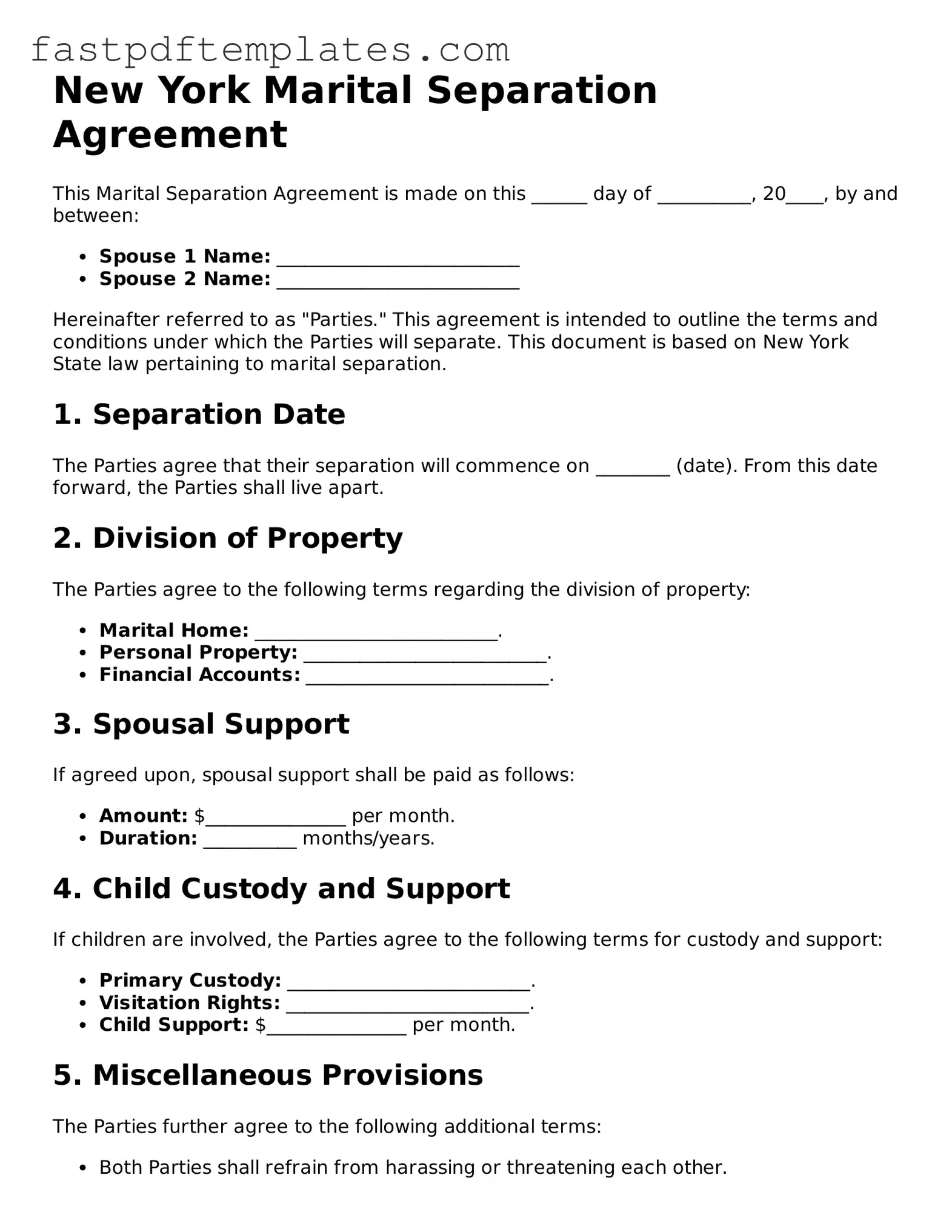New York Marital Separation Agreement
This Marital Separation Agreement is made on this ______ day of __________, 20____, by and between:
- Spouse 1 Name: __________________________
- Spouse 2 Name: __________________________
Hereinafter referred to as "Parties." This agreement is intended to outline the terms and conditions under which the Parties will separate. This document is based on New York State law pertaining to marital separation.
1. Separation Date
The Parties agree that their separation will commence on ________ (date). From this date forward, the Parties shall live apart.
2. Division of Property
The Parties agree to the following terms regarding the division of property:
- Marital Home: __________________________.
- Personal Property: __________________________.
- Financial Accounts: __________________________.
3. Spousal Support
If agreed upon, spousal support shall be paid as follows:
- Amount: $_______________ per month.
- Duration: __________ months/years.
4. Child Custody and Support
If children are involved, the Parties agree to the following terms for custody and support:
- Primary Custody: __________________________.
- Visitation Rights: __________________________.
- Child Support: $_______________ per month.
5. Miscellaneous Provisions
The Parties further agree to the following additional terms:
- Both Parties shall refrain from harassing or threatening each other.
- Any modifications to this agreement must be made in writing and signed by both Parties.
- The Parties shall each be responsible for their own legal fees.
6. Governing Law
This Agreement shall be governed by the laws of the State of New York.
7. Signatures
The Parties, intending to be legally bound, hereby agree to the terms set forth in this Marital Separation Agreement.
Spouse 1 Signature: __________________________ Date: ____________
Spouse 2 Signature: __________________________ Date: ____________
This Agreement is effective as of the date signed by both Parties.
